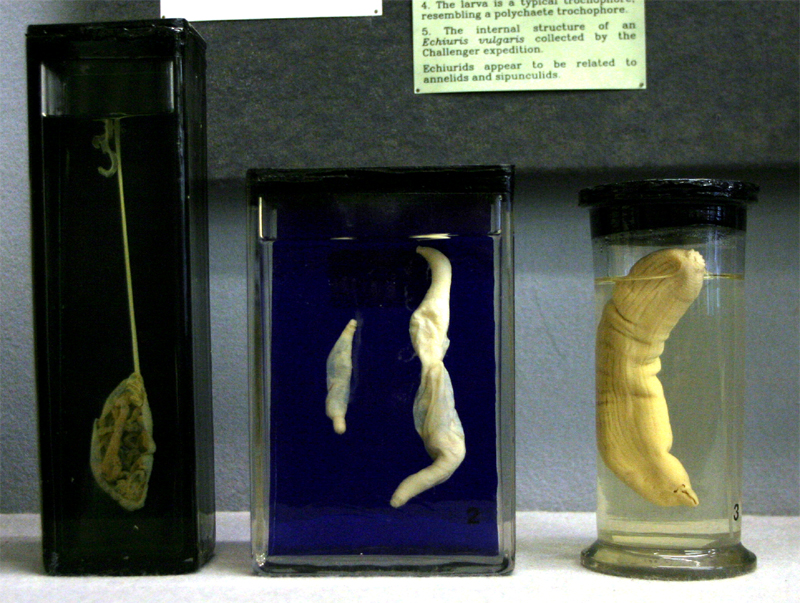
PHYLUM ECHIURA |
The spoon worms (135 species) are cosmopolitan burrowers in marine mud and sand. They range in length from 10 –15 cm in length. Echiurids have a large non-retractable proboscis with a gutter on one side, which they use to comb the substrate for detritus. This food is carried to the mouth by ciliary action. Echiurids appear to be related to annelids and sipunculids. Not all echiurids burrow, some are incarcerated in small natural openings in rocks or shells. The larva is a typical trochophore, resembling a polychaete trochophore. From left to right:
 |






